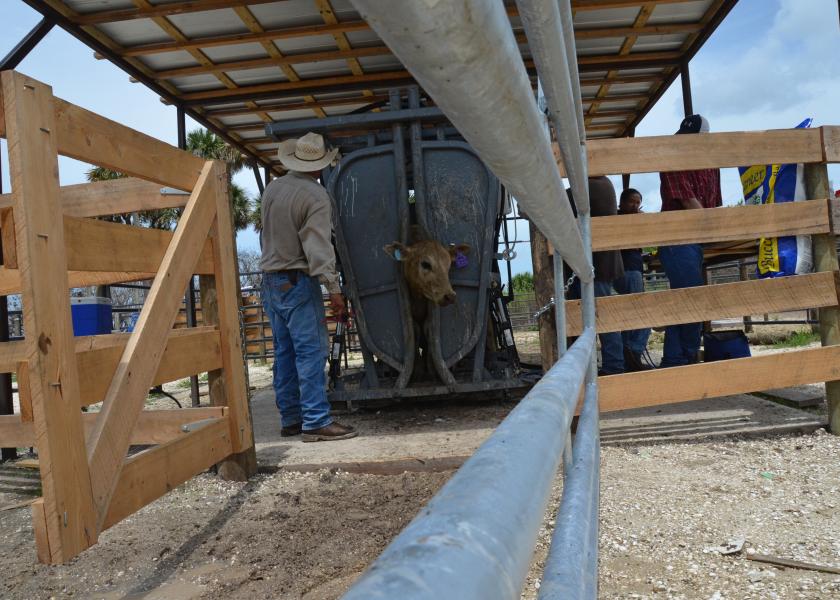Mass Treat - Still Hard to Beat

While our multi-segment beef production and marketing system performs well in some areas, we still face one key weakness: outbreaks of bovine respiratory disease (BRD) are still caused by weaning, shipping and commingling insufficiently preconditioned calves. And for stockers, backgrounders and feeders who receive those calves, mass treatment on arrival, or metaphylaxis, serves as a tool for preventing sickness and death loss.
Cattle feeders first began using mass treatments for newly arrived calves back in the 1970s, as a means of controlling outbreaks of “shipping fever.” Since then, procedures have evolved with the availability of more effective antibiotics, more regulation of veterinary medications and greater emphasis on food safety, antibiotic residues and prevention of antibiotic resistance.
In a recent presentation to the American Association of Bovine Practitioners (AABP), Tom Latta, a feedyard consultant based in Spearman, Texas, outlined the history and current trends in metaphylaxis for feedyard cattle.
Beginning in the early 1970s, cattle feeders used intravenous injections of tetracycline for mass treatments. The method seemed to reduce BRD morbidity, but was time consuming. Some shifted to longer-acting penicillin, mostly in groups of calves breaking with BRD.
Also in the 1970s, producers began administering sulfathiazole through drinking water, and somewhat later combined the antimicrobial sulfa compound with chlortetracycline (CTC) for mass treatments. Some veterinarians around the same time used erythromycin injections, which tended to cause tissue reactions at injection sites.
By the late 1970s, veterinarians and clinics began marketing and administering proprietary compounds including two or more antibiotics along with a blend of vitamins and minerals to be used for mass treatments.
Aminoglycosides, such as gentamicin, and also chloramphenicol, saw use in the late 1970s, but were discontinued due to humanhealth concerns.
The 1980s and 1990s brought the introduction of ceftiofur and tilmicosin, which allowed lower dosages, easier use and better efficacy for mass treatments. These were followed by products such as florfenicol and tulathromycin, which are widely used today.
Addressing the economics of metaphylaxis, Latta says many feedlot managers do not have adequate data to make mass- treatment decisions. Most make some risk assessments before cattle arrive, based on their source, travel distance and other factors, then they observe cattle off the truck to make a final decision on mass treatment. He stresses the importance of observing the post-metaphylaxis interval (PMI) or post-treatment interval (PTI), especially with today’s longer-acting antibiotics. Delaying additional treatments through a predetermined PMI allows the program to work and provides objective data with which to measure success.
Latta also discussed a case in which a feedlot operator decided to cut production costs by using metaphylaxis less frequently and using lower-priced antibiotics. The system worked for a while, but with the arrival of fall weather and the run of higher-risk calves, costly outbreaks occurred. This suggests that with planning and adequate records, feedyards can adjust mass-treatment protocols somewhat based on risk levels, but too much cost cutting in this area could lead to greater expenses down the road.








